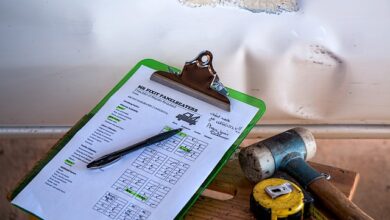What to Do If Your Homeowners Insurance Claim is Denied in Canada

Experiencing damage to your home can be stressful, and filing a homeowners insurance claim is often the first step toward recovery. However, discovering that your claim has been denied can feel like an additional blow. While insurance companies are obligated to honor valid claims, denials can happen for various reasons. The good news is that a denial isn’t necessarily the end of the road. In this article, we’ll guide you through the steps to take if your homeowners insurance claim is denied in Canada, helping you navigate the process with confidence.
1. Stay Calm and Review the Denial Letter
The first thing you should do after receiving a denial is to remain calm. A denial doesn’t mean you’ve lost all options. Carefully review the denial letter sent by your insurance provider. This document will outline the specific reason(s) why your claim was rejected. Common reasons for claim denials include:
- Exclusions in the Policy: Certain damages, such as those caused by floods or earthquakes, may not be covered unless you have additional endorsements.
- Lack of Documentation: Insufficient evidence or failure to provide required documentation can lead to a denial.
- Policy Lapses: If your premium payments were late or missed, your policy may have lapsed.
- Misrepresentation: Providing inaccurate information when purchasing the policy can result in a denial.
- Wear and Tear: Damage caused by normal wear and tear or lack of maintenance is typically not covered.
Understanding the reason for the denial is crucial, as it will guide your next steps.
2. Double-Check Your Policy Details
Once you know why your claim was denied, revisit your homeowners insurance policy. Pay close attention to the following:
- Coverage Limits: Ensure that the damage you’re claiming falls within the scope of your coverage.
- Exclusions: Verify whether the type of damage you’re claiming is explicitly excluded from your policy.
- Deductibles: Confirm whether the cost of repairs exceeds your deductible, as claims below the deductible amount may not be honored.
If you’re unsure about any part of your policy, don’t hesitate to contact your insurance provider for clarification. Sometimes, misunderstandings can be resolved quickly by reviewing the fine print.
3. Gather Additional Evidence
If you believe your claim was unfairly denied, gather as much supporting evidence as possible. This may include:
- Photographs and Videos: Document the damage thoroughly, showing both the overall impact and specific areas affected.
- Repair Estimates: Obtain quotes from licensed contractors to substantiate the cost of repairs.
- Witness Statements: If applicable, collect statements from neighbors or others who witnessed the event that caused the damage.
- Correspondence: Keep copies of all communication with your insurance company, including emails, letters, and notes from phone calls.
Having a strong body of evidence can strengthen your case during the appeals process.
4. File an Appeal with Your Insurance Provider
Most insurance companies have an internal appeals process for denied claims. Follow these steps to file an appeal:
- Write a Formal Letter: Draft a clear and concise letter explaining why you believe the denial was incorrect. Include all relevant details, such as the date of the incident, the nature of the damage, and any supporting evidence.
- Reference Your Policy: Highlight specific sections of your policy that support your claim.
- Attach Supporting Documents: Include copies of photos, repair estimates, and any other evidence that backs your case.
- Submit the Appeal: Send your appeal letter and supporting documents to your insurance provider via certified mail to ensure it’s received.
Be patient during this process, as it may take some time for the insurer to review your appeal.
5. Seek Assistance from a Licensed Insurance Broker or Advocate
If your appeal is unsuccessful or you’re unsure how to proceed, consider seeking help from a licensed insurance broker or advocate. These professionals can:
- Review your policy and denial letter to identify potential issues.
- Provide guidance on how to strengthen your appeal.
- Act as a liaison between you and your insurance company.
In Canada, organizations like the Insurance Brokers Association of Canada (IBAC) or provincial insurance regulators can also offer resources and support.
6. Contact Your Provincial Insurance Regulator
Each province in Canada has its own insurance regulatory body that oversees the industry and handles consumer complaints. If you believe your claim was wrongfully denied and your insurer is uncooperative, you can escalate the matter by contacting your provincial regulator. Here’s how to proceed:
- File a Complaint: Submit a formal complaint to your provincial regulator, providing all relevant documentation.
- Request a Mediation: Many regulators offer mediation services to help resolve disputes between consumers and insurers.
- Seek Legal Advice: If mediation doesn’t resolve the issue, consult a lawyer who specializes in insurance law. They can assess whether you have grounds for legal action.
Below are the contact details for some provincial insurance regulators:
- Ontario: Financial Services Regulatory Authority of Ontario (FSRA)
- British Columbia: Insurance Council of British Columbia
- Alberta: Alberta Insurance Council
- Quebec: Autorité des marchés financiers (AMF)
7. Consider Legal Action as a Last Resort
If all else fails, you may need to consider taking legal action against your insurance company. While this should be a last resort due to the time and expense involved, it can be an effective way to hold your insurer accountable. Consult with a lawyer who specializes in insurance disputes to determine whether pursuing litigation is worth it in your situation.
8. Learn from the Experience
Even if your claim is ultimately denied, use the experience as an opportunity to improve your understanding of homeowners insurance. Take the following steps to avoid similar issues in the future:
- Review Your Policy Regularly: Ensure your coverage aligns with your current needs and property value.
- Maintain Your Home: Regular maintenance can prevent damage and demonstrate responsible homeownership.
- Document Everything: Keep detailed records of home improvements, repairs, and incidents that could affect your coverage.
- Consider Additional Coverage: If certain risks (e.g., flooding or earthquakes) aren’t covered, explore endorsements or separate policies to fill the gaps.




